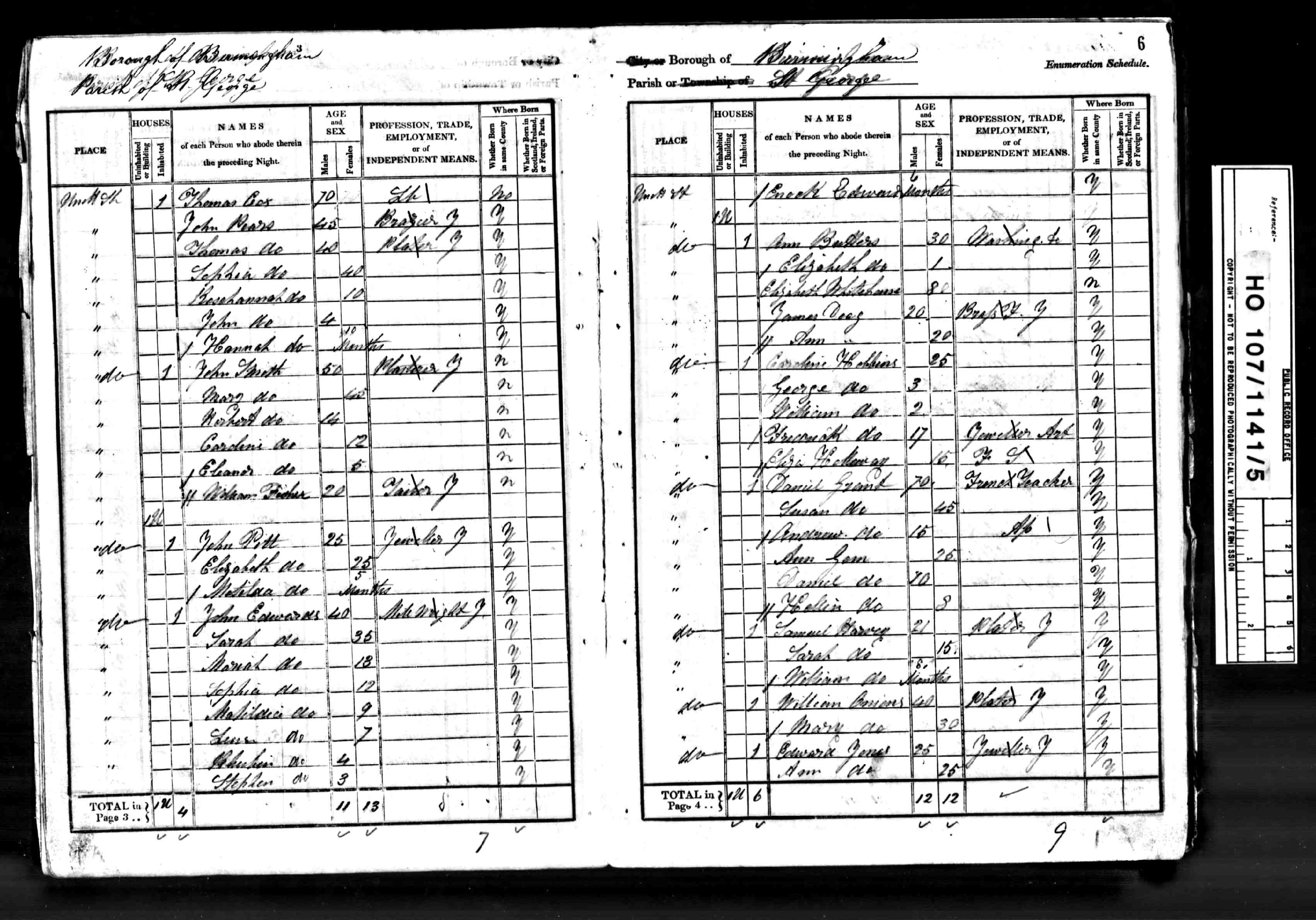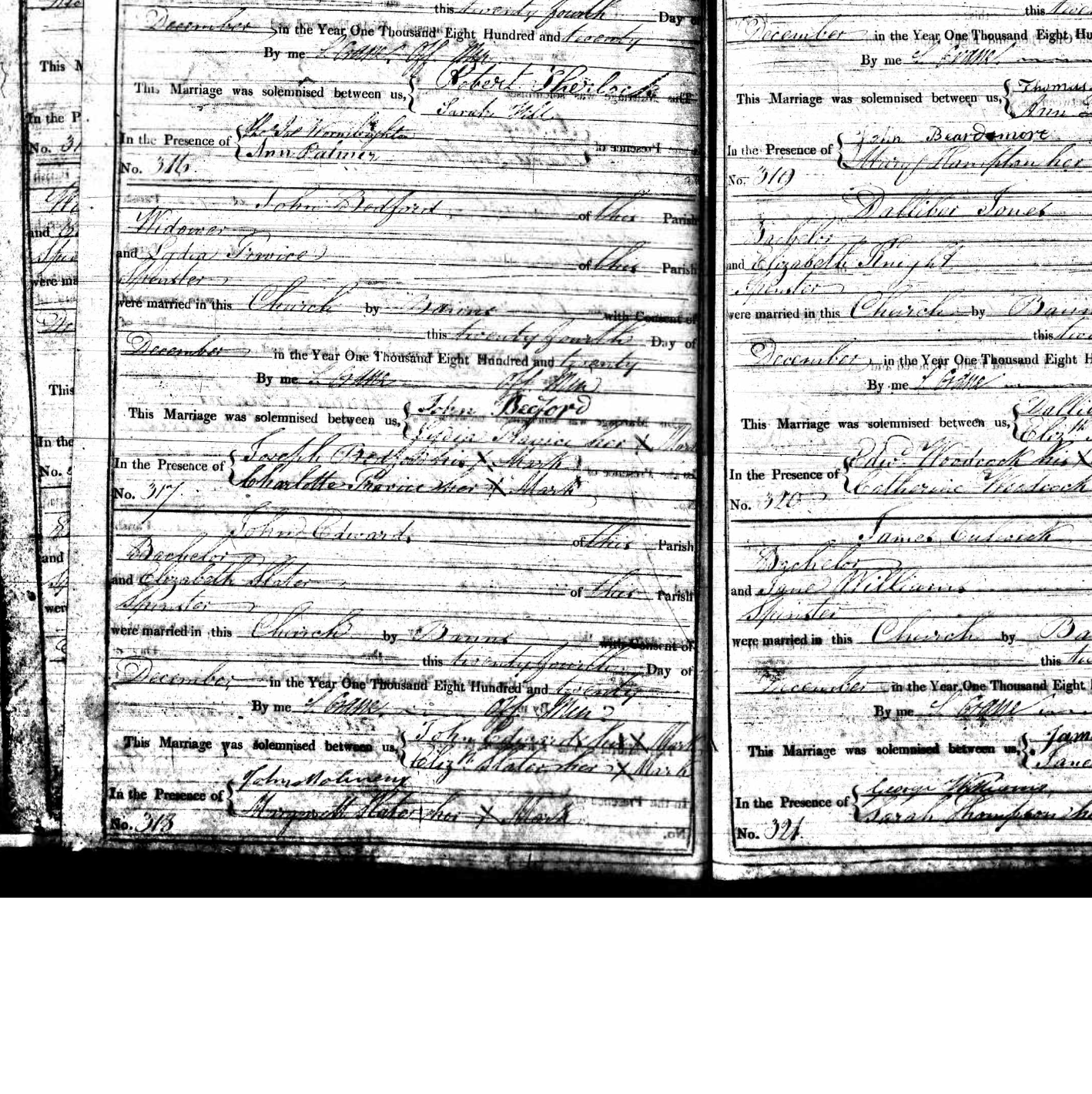Was Engineering a family profession? A longer shot theory!
The EDWARDS of Bermondsey and Neath:
In April 1811 Messrs Woolf and Edwards demonstrated Woolf's new high-pressure compound steam engine design at their premises on Mill Street, Bermondsey. Alfred WOOLF and Humphrey EDWARDS had formed a partnership in 1806.
On the east side of Mill Street were warehouses lining St Saviour's Dock (an inlet of the Thames) and on the west side were factories including flour and rice mills and a cooperage.
The tests demonstrated huge efficiency gains over Boulton and Watt's steam engine design by measuring the amount of wheat that could be ground using a measured amount of coal in a given time. In attendance as a witness was Richard Trevithick, whose locomotive engine had completed the world's first locomotive-hauled railway journey seven years earlier, and "John Edwards, engineer".1
It's likely that this John EDWARDS was the millwright John EDWARDS (1738-1819) son of Humphrey EDWARDS of Neath (1697-1768) and brother to a third Humphrey EDWARDS (1747-1806) also a millwright.
John had travelled to London from Neath to seek his fortune with his uncle John NASH, a millwright and later father to John NASH the famous architect. This John, who did a lot of work for water companies, lived in Lambeth where the engine tests were conducted.
Following the demonstration the patent and business were to be sold, and Woolf returned to Cornwall later that year, but the partnership wasn't dissolved until 1822. The "best flour mill in England ... that well-known STEAM ENGINE and FLOUR MILL, which has for some time been at work at H. Edwards's Steam Engine Manufactory, Mill-street, Lambeth Walk was put up for auction on 17 Feb 1812 at Jack's Coffee-house, Corn Exchange, Mark-lane.2
Woolf and Trevithick are lauded as the creators of the steam engine, with Woolf's improvements widely acknowledged, but Humphrey EDWARDS was largely forgotten for any part he played, but the Woolf compound steam engine manufactured by Humphrey EDWARDS was popular in France where the price of coal was high. An 1827 report of the French coal mines in Anzin, stated that 15 of Edwards's engines were being used in the extraction of coal, and following the 1811 he focussed on the French market. One of his engines supplied water to west Paris and the Left Bank. Humphrey had a son Henry Hind EDWARDS who inherited the business but gave up in 1847, joining the Paris Railway Company in Strasbourg. This French connection suggests that Humphrey was not John EDWARDS' father, and there is no evidence he had a son called John.
Whether Humphrey EDWARDS of Bermondsey was in some way related to the Humphrey EDWARDS of Neath is unclear, but the use of the name Humphrey appears more than coincidence.
How does our John EDWARDS fit in?
In 1811, our John EDWARDS would have been 15. A possible baptism for John EDWARDS junior was conducted on 3 Apr 1796 at St Mary Magdalen, Bermondsey, by John EDWARDs, bricklayer of "Five foot lanes", and Elizabeth his wife. This John was born 27 Feb 1796. The church is 5 minutes walk from Mill Street and "Five foot lane", which was later called Russell Street and is now called Tanner Street, ended at the beginning of Mill Street. Perhaps this older John EDWARDS was a brother to Humphrey? If so then our John EDWARDS could have apprenticed at Woolf and Edwards there and then struck out for himself in Birmingham after Humphrey left for France. The Woolf and Edwards engine had not been a commercial success in England, so his family may not have had much capital to invest in nephews.
Another tantalising connection is that it is believed (but not confirmed) that Humphrey EDWARDS of Neath was originally from Broseley Shropshire (a noted iron-making centre), and had migrated to Neath, where their employer has married advantageously and wanted to invest in local mills. While there is no baptism of this Humphrey in 1697, there is one in Kinnerley for a Humphrey EDWARDS son of Edward EDWARDS of Kynaston in 1693.
As yet there is no documented link between John EDWARDS the London and Neath EDWARDS, other than a baptism.
Elsewhere, on 11 Sep 1834, Messrs EDWARDS and Co, engineers, millwrights, brass and iron founders etc etc opened a new establishment in Hanley, Staffordshire. There is unconfirmed suggestion that this was a Joseph EDWARDS.
On 1 Jun 1807, in Birmingham, a John EDWARDS, of Friday Bridge Wharf, entered an advertisement for a 2-4HP engine to grind corn4.
Was Reuben a family name?
Is it simply a coincidence that two John EDWARDS with wives called Sarah were living in Birmingham in 1841 with children called Sophia and Ruben/Rheubin? One of the Sarah's was Sarah REYNOLDS from Kinlet, Shropshire. The other was from Cradely, Worcestershire.
A Reuben EDWARDS of the parish of St Dunstan-in-the-West, Fleet Street, Holborn, son of Benjamin and Hannah, born July 1790, had a non-conformist burial on Christmas Day 1791 at Spa Fields burial ground. No other children were baptized. A John EDWARDS was baptised in Birmingham by Benjamin EDWARDS and SARAH in Sep 1798
A Reuben EDWARDS of Uley, Gloucestershire was baptized by William and Sarah EDWARDS in Aug 1786. Other children: Elizabeth in 1782, Mary, William, George and Mary in 1791.
A Reuben EDWARDS of Denbigh was baptized by William, a stonemason, and Elizabeth in Oct 1793. Other children baptized but no John or other 'family' names.
A Reuben EDWARDS of Halesowen was baptized by Joseph and Anne in March 1803 in Cradley Park Lane Chapel. No John or other family names.
A Reuben EDWARDS of Epsworth, Lincolnshire, was honourably discharged from Garrison Duty in Plymouth, aged 44 in 1803.
Was Matilda a family name?
A Matilda EDWARDS was baptized by John & Elizabeth in May 1802 at St Martin in the Bull Ring, Birmingham3. This couple also baptized a John EDWARDS in November 1787 at the same church, but this John would have been too old.
Other clues
On 29 Jan 1827 notice was published in Aris's Birmingham Gazette of the dissolution a partnership between John EDWARDS and Samuel COY, of Great Brooke-street, Stone Masons. Could this have been John EDWARDS junior or senior?
Local wills
Richard EDWARDS probate 1802, all goods to Mary COOPER married Joseph COOPER 20 Aug 1799 as a widow named Mary EDWARDS, possibly Richard's then re-married wife, or a brother's widow.
Catharine EDWARDS, victualler or Bull Street, probate 1804. Children: Harriot Elizabeth HANCOCK, Eliza, George, Daniel and John. (This was wife of George.)
William EDWARDS, maltster and victualler of Deritend, with multiple properties near Deritend Bridge over the river Rea, and on Snowhill, Birmingham, probate 1791. Wife Elizabeth, daughters Frances (c.1773) and Sarah (c. 1779), and son William (c. 1766). His brother was Thomas EDWARDS of "Lansaintfraide" (Llansantffraid) in Montgomeryshire and sister was Mary BRYAN of "Myvod" (Meifod) in Montgomeryshire. Montgomeryshire was on the Welsh border. Interesting in that William was a first generation Welsh immigrant







